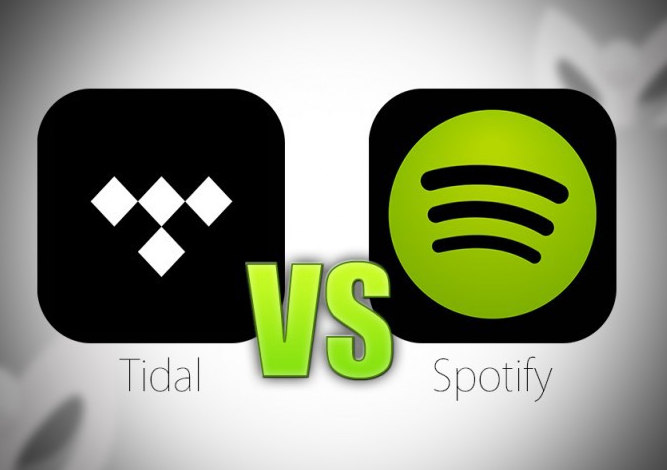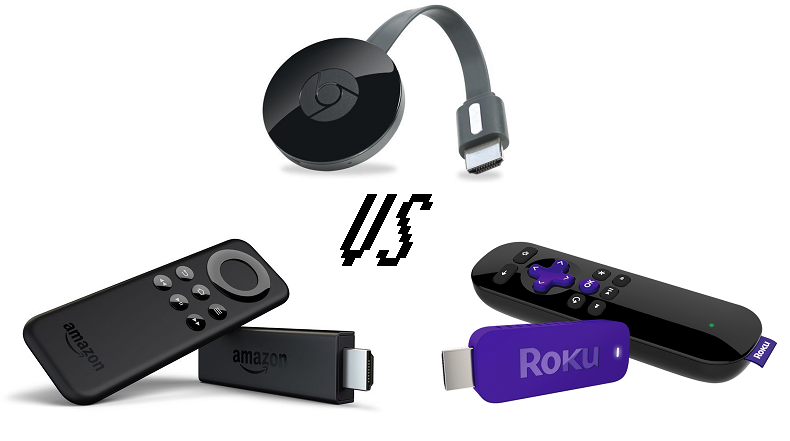Tidal vs Spotify: Which Music Streaming Service is Best?

Which one is the best music streaming service between tidal vs spotify? Choosing the best music streaming service for your needs can be a small tricky; while streaming is still relatively new in the magnificent scheme of music-listening, there are so many platforms to pick from these days, two of the biggest being Spotify and Tidal.
Spotify is currently the world’s most popular streaming service, hitting 113 million subscribers in October last year and continuing to grow, and that’s despite mounting competition from the likes of Apple Music.
However, Spotify isn’t ideal as a service, and its lossy audio streams have left audiophiles craving a little more fidelity – which is where Tidal comes in.
With a focus on providing Hi-Res Audio at a CD-like level of quality, the platform was acquired in 2015 by hip-hop star Jay-Z, becoming the first primary music service owned by the artists themselves. As such, Tidal claims to pay higher royalties than its opponents to artists and songwriters.
It’s not just about standards and audio quality, though; both Spotify and Tidal offer different user experiences, pricing structures, and music catalogs. Making the best choice for your needs can be confusing.
That’s why we’ve put together this helpful guide to both services so you can compare them in one easy place and hopefully find out whether Spotify or Tidal is the best streaming service for you.

Tidal vs Spotify: Price and availability
Both Spotify and Tidal offer several different subscription tiers – but only Spotify offers a free plan (though it is ad-supported and you can’t listen to tracks in the order you want).
The cheapest paid Spotify plan is Spotify Premium, which takes $9.99 / £9.99 / AU$11.99 per month, and gives you unlimited access to its 30 million-plus track library on your laptop, phone, and tablet. Spotify Premium also allows you to download tracks to three devices at a time for offline playback.
Discounts are available for students, and you can even go Premium and access to mindfulness app Headspace under one discounted plan. Students receive Headspace access as part of their Premium package.
Suppose there are a few people in your household that want to use Spotify. In that case, you can save money by signing up for a Spotify Premium for Family account, which allows up to six people to connect to Spotify at one time (if you try to do this with a regular account, you’ll see bumped off the service as soon as another user plays a song). This tier takes $14.99 / £14.99 / AU$17.99 and requires all members to live under the same roof.
Tidal offers two subscription plans, the cheapest being Tidal Premium, which costs $9.99 / £9.99 / AU$11.99 and gives streams at a bitrate of 320kbps – the same audio quality as Spotify.
If it’s Hi-Res Audio you’re after, you’ll require to shell out for $19.99 / £19.99 / AU$23.99 per month for Tidal HiFi. So, Spotify offers cheaper subscription programs, but it doesn’t provide a higher fidelity tier for audiophiles as Tidal does.
Tidal vs Spotify: User interface
One of the reasons that Spotify is so famous is down to its easy-to-use interface. When you open up the app, you’ll find several personalized playlists – your ‘Daily Mixes’ – that have been curated by Spotify based on your listening habits, alongside your top artists, top playlists, and new releases.
That’s a thing to note regarding Spotify; there are a lot of playlists. That might sound daunting, but it’s a plan that works as its algorithms ultimately tailor the app to each user.
Everything is laid out in colorful tiles that pop-facing Spotify’s dark background. The tile system is just small sufficient to make selecting new albums and playlists easy while packing in plenty into a timeline of content that’s ultimately curated to what you’ve been listening to and what you might require to jump into next.
On the desktop app and web player, there’s a sidebar on the left of the screen that allows you to navigate new music releases, radio stations, as well as your library, playlists, recently played songs and more. In the mobile app, these sections are a little more hidden away to save space, and it’s worth noting that the layout of the desktop and mobile platforms is a bit different.
Searching is very intuitive, and even if you misspell an artist’s name, Spotify will usually find what you’re looking for.
Tidal uses a similar tile-based interface on a dark background, and you’ll get curated playlists, recommended albums, and charts on your home screen. Clicking the sidebar will take you to your ‘My Music’ area, where you’ll find all your saved tracks, and browsing is generally elementary.
You can’t search by genre, unlike Spotify, which is a disgrace for a platform aimed at true music lovers. Search generally isn’t intelligent – misspell an album or artist name even by one character or one piece of punctuation, and you’ll be left with zero results. A bit of optimization here wouldn’t bother, but as long as you’re careful, you won’t have any problems with it.
Saying that Tidal does boast one outstanding feature that Spotify doesn’t, audio-search is essentially like having Shazam built directly into the app. Press the button, and it’ll listen out for any song it can pick up in your environment, identify it, and allow you to save it to your Tidal library.
Tidal vs Spotify: Compatibility
You can see Spotify on Android, iOS, and Windows Phone devices. If you use a laptop or desktop systems, Spotify also supports OS X and Windows, and there’s a flash-based web player, too.
Support for Tidal is essentially the same, so you can get it on devices that run iOS 11 and higher, Android 5 and higher, macOS, and Windows. Both streaming platforms are also supported by several more left-field gadgets, including AV receivers, TVs, and even cars.
Tidal vs Spotify: Music catalog and discovery
Spotify currently boasts over 50 million songs, whereas Tidal rights to have 60 million tracks in its catalog.
Spotify’s substantial influx of tracks helped it take off in its early days, and with a reported 40,000 tracks added on average every single day – and it’s showing no signs of slowing down.
The streaming giant has a big focus on promoting new tracks and breakthrough artists through curated playlists like New Music Friday, acting as a launchpad for fledgling artists to break through into the big time.
Curated playlists are almost constantly the first thing you see when you load any version of the app, with the service seemingly designing playlists for nearly every musical sub-genre. These are constantly being updated, too, so your favorite ones never grate following prolonged use.
As we mentioned before, you’ll also find personalized playlists based on your listening practices, which is a fantastic way to discover new music, as well as revisiting some of your favorite tracks.
Spotify does have some glaring omissions in its music catalog, however, mainly down to artists who don’t want to make their music available to stream anywhere or artists who have a particular dislike of Spotify’s royalty payments.
You won’t see artists like Joanna Newsom and Garth Brooks on Spotify. Until relatively recently, you couldn’t even listen to The Beatles – though you’ll find their entire discography on the streaming platform these days (thank goodness).
Some of the artists who are absent from Spotify have close ties to Jay-Z and, therefore, favor Tidal’s platform. Beyoncé’s 2019 album Lemonade debuted on Tidal completely, for example.
That means Tidal’s catalog can feel somewhat skewed towards hip-hop and rap artists, though this may be down to the platform’s editorial curation of its tracks.
That being said, Tidal does an outstanding job of curating music playlists based on your listening habits, and you’ll find that just a few weeks of use will give its algorithms enough information to serve you fascinating recommendations.
Aside from these personalized recommendations, Tidal also signposts the most popular playlists and releases on its service, as well as mood-based playlists and the Rising Tidal section, which flies the flag for new talent.
Both platforms also offer podcasts, though it looks like Spotify is taking this area a little more seriously, having spent over $200 million to acquire two podcast production companies in 2019.
Tidal vs Spotify: Audio quality
If you subscribe to Spotify Premium, you can choose between three sound quality levels: standard, high, and extreme. When utilizing the mobile and desktop apps, Spotify uses Ogg Vorbis. This was a semi-popular format a decade ago, and Spotify remains to use it because it’s open source. Spotify doesn’t have to give a license fee for it.
At Standard setting, music streams at 96kbps, which plays a lot better than MP3 at 129kbps. Switch up to the high-quality environment, and the bitrate bumps up to 160kbps. The ultimate setting uses 320kbps, which is perceptually close to lossless. Spotify doesn’t give any lossless or Hi-Res streaming, which is one reason why audiophiles might want to consider another service.
If you’re dead-set on the best potential audio quality, then Tidal is your best bet. For that, you’ll need a Tidal HiFi subscription, which allows you to stream lossless 16-bit FLAC and ALAC audio – though thousands of TIDAL Masters files stream at 24-bit.
Even if you opt for Tidal Premium, its catalog is still available to stream in 320kbps, the same quality as Spotify’s highest setting – and you may even find that Tidal’s tracks sound a small richer at this setting.
So, why bother with lossless streaming? Well, Hi-Res Audio codecs are able of reproducing the full range of sound from recordings that have been mastered from better-than-CD quality music sources. This sound closely replicates the quality that the musicians and engineers worked within the studio at the recording time.
The increased bit depth of HRA improves the dynamic range, basically giving you a greater breadth of things to hear from the recording, making tracks sound more detailed and precise.
It’s a little like the contrast between SD and HD television; the former works just fine, but you’ll notice a real difference in quality if you make the upgrade to higher resolution audio.
FAQs
Is tidal worth the money?
Tidal’s $19.95 per month HiFi plan is costly than rival services, but you may find that it’s worth the cash if you value audio quality. Here’s why: Tidal’s more than 25 million music streams can sound significantly more reliable than rival companies’ streams.
Is tidal better for artists?
TIDAL offers 60 million songs in their catalog, while Spotify offers 50 million. Finally, TIDAL’s sound quality (with the $19.99 plan) is superior to Spotify’s good quality. This makes it an excellent option for artists that want to make it big (even if their sound isn’t mainstream).
Is tidal better quality?
Tidal’s claim to fame delivers actual lossless streams at 1.4Mbps — legitimate CD quality, for all practical purposes — while Spotify tops out at 320kbps. Apple Music runs at a slightly lower 256kbps, but it works a better encoding scheme, AAC, than Spotify’s Ogg Vorbis.
Is tidal better than Apple music?
The locally-saved Apple Music files are 256 kbps in AAC files, the same format and quality as tracks we bought from iTunes. So indeed, Tidal is the winner in this round. The standard $ 9.99 per month offers audio quality in 320kbps AAC audio, also much better than other streaming services.


